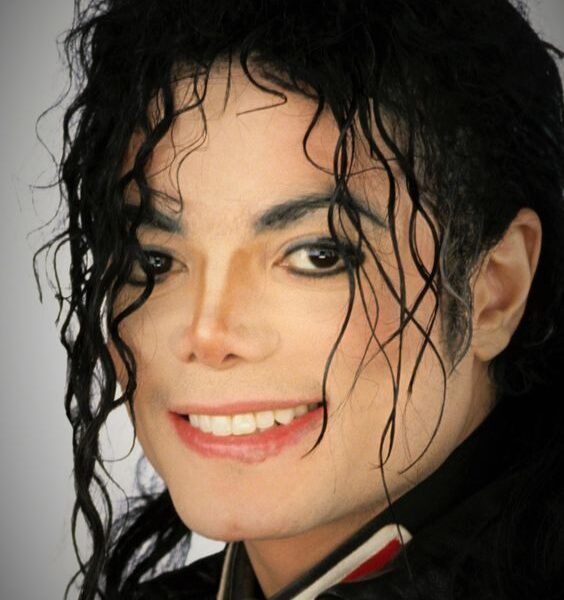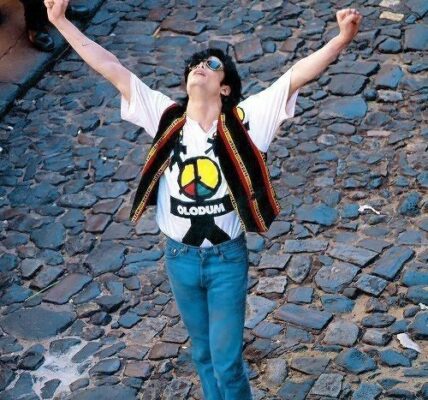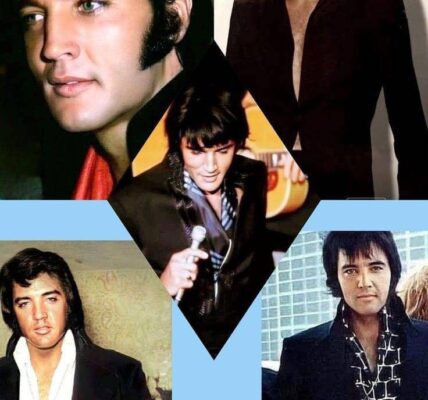Michael Jackson, the King of Pop, was an unparalleled icon, whose influence spanned music, dance, and fashion. His performances were not just concerts but theatrical spectacles that captivated audiences worldwide. Central to these mesmerizing performances was his use of transformative makeup, which played a pivotal role in bringing his characters to life and enhancing his stage presence. This article delves into the evolution of Michael Jackson’s stage makeup, the techniques behind his transformations, and the impact of his innovative approach.
The Evolution of Michael Jackson’s Stage Makeup
Michael Jackson’s journey with stage makeup began in the early years of his career with the Jackson 5, but it reached its zenith during his solo career in the 1980s and 1990s. As his music evolved, so did his on-stage image, requiring more sophisticated and dramatic makeup techniques to match his visionary performances.
Early Years: Natural and Youthful
In the early days of the Jackson 5, Michael’s makeup was minimal, reflecting his youthful innocence and natural charm. His makeup during this period was limited to basic grooming, such as evening out his skin tone and subtle enhancements to his eyes and lips. The emphasis was on maintaining a fresh, clean look that resonated with his boy-next-door image.
The 1980s: The Birth of an Icon
The 1980s marked a turning point in Michael Jackson’s career and his approach to makeup. With the release of “Thriller,” he began to experiment with more dramatic and theatrical looks. This era saw the introduction of bold eyeliner, contoured cheekbones, and defined brows that became his signature look.
Foundation and Contouring
- Flawless Base: Michael’s makeup artists used high-quality foundation to create a flawless base. This was essential for stage performances under bright lights, ensuring his skin appeared smooth and even. The foundation also helped to even out his skin tone and provided a canvas for further makeup application.
- Contouring: Contouring was used to accentuate his facial features, giving his face more definition and structure. This technique helped highlight his cheekbones and jawline, crucial for his sharp, expressive look. The use of shading and highlighting created a sculpted appearance that enhanced his on-stage persona.
Eye Makeup
- Defining the Eyes: Michael’s eyes were a focal point of his stage makeup. Bold eyeliner and eyeshadow were used to create a dramatic effect, enhancing his eyes’ expressiveness. Smokey eyes and winged eyeliner were common styles that added intensity to his gaze. The dramatic eye makeup helped to convey emotion and captivated the audience.
- False Eyelashes: To further amplify his eye makeup, false eyelashes were often used, adding volume and drama that stood out even from a distance. The addition of false eyelashes created a striking look that drew attention to his eyes, making them a central feature of his performances.
Eyebrows
- Shaping and Defining: Michael’s eyebrows were meticulously shaped and defined to complement his eye makeup. Well-groomed and filled-in brows framed his face, adding to his polished and striking appearance. The defined eyebrows helped to enhance his facial expressions and contributed to his iconic look.
Lips
- Subtle yet Defined: Unlike his eyes, Michael’s lips were usually kept subtle. Neutral shades of lipstick or gloss were used to keep the focus on his eyes and overall face structure while ensuring his lips didn’t look washed out under the stage lights. The understated lip color balanced his dramatic eye makeup, creating a harmonious look.
The 1990s: Refinement and Sophistication
In the 1990s, Michael Jackson’s makeup evolved to reflect a more refined and sophisticated image. This period saw a shift towards a more polished and elegant look, with makeup that enhanced his natural features while still maintaining the drama required for his performances.
Special Effects Makeup
- Thriller: One of the most iconic uses of makeup in Michael Jackson’s career was for the “Thriller” music video. Special effects makeup transformed him into a zombie, with intricate details like decayed skin, sunken eyes, and other ghoulish features. This transformation was pivotal in setting a new standard for music videos and stage performances. The success of “Thriller” demonstrated the power of makeup to create compelling characters and narratives.
- Smooth Criminal: For performances like “Smooth Criminal,” makeup was used to give Michael a classic, refined look reminiscent of 1930s gangsters, complete with sharp facial features and a sophisticated aura. The makeup for “Smooth Criminal” showcased his ability to embody different personas through the use of makeup and costume.
Hair and Wigs
- Complementing the Makeup: Michael’s hair and wigs were also carefully styled to complement his makeup and overall look. Whether it was the Jheri curl of the “Thriller” era or the sleek, straight hair in later years, his hairstyles were integral to his stage persona. The coordination between his makeup and hair created a cohesive and striking appearance that enhanced his performances.
The Importance of Makeup Artists
Behind every stunning transformation was a team of talented makeup artists who understood Michael’s vision and brought it to life. These artists worked closely with him to create looks that not only suited his music and performance style but also pushed the boundaries of stage makeup artistry. Key figures in his makeup team included Karen Faye, who worked with Michael for many years and played a significant role in crafting his iconic looks.
Collaboration and Innovation
Michael Jackson’s collaboration with his makeup artists was marked by a spirit of innovation and experimentation. He was deeply involved in the creative process, often providing input and feedback on his makeup looks. This collaborative approach allowed for the development of unique and groundbreaking makeup techniques that became hallmarks of his performances.
Adaptation to Changing Trends
Throughout his career, Michael Jackson’s makeup evolved to reflect changing trends and his own artistic growth. His makeup artists were adept at adapting to these changes, incorporating new techniques and products to keep his looks fresh and relevant. This adaptability ensured that his stage persona remained dynamic and captivating.
The Impact of Michael Jackson’s Stage Makeup
Michael Jackson’s use of makeup on stage went beyond mere aesthetics. It was a tool for storytelling, helping him embody different characters and emotions. His makeup was part of the larger narrative of his performances, adding depth and dimension to his already captivating presence.
Creating Iconic Looks
Michael Jackson’s makeup contributed to the creation of some of the most iconic looks in music history. From the ghoulish transformation in “Thriller” to the smooth and sophisticated “Smooth Criminal,” his makeup looks have become instantly recognizable symbols of his artistry. These iconic looks have left a lasting impact on popular culture and continue to inspire artists and performers.
Enhancing Emotional Expression
The dramatic and expressive makeup techniques used by Michael Jackson enhanced his ability to convey emotion on stage. His eyes, in particular, were a powerful tool for communicating feelings of joy, sorrow, intensity, and passion. The bold eyeliner and defined brows accentuated his expressions, allowing him to connect with his audience on a deep emotional level.
Setting New Standards
Michael Jackson’s innovative use of makeup set new standards for stage performances and music videos. He pushed the boundaries of what was possible with makeup, incorporating special effects and theatrical elements that elevated his performances to new heights. His groundbreaking work in this area has influenced countless artists and continues to set the bar for creativity and innovation in the entertainment industry.
Legacy and Influence
Michael Jackson’s legacy in music and performance art continues to inspire, and his innovative use of makeup remains a testament to his unparalleled artistry. His transformative makeup looks have become an integral part of his identity and have left an indelible mark on the world of entertainment. Aspiring artists and performers look to his example as a source of inspiration for pushing the boundaries of creativity and self-expression.
Conclusion
Makeup was an essential element of Michael Jackson’s stagecraft, enhancing his performances and contributing to his legendary status. From subtle enhancements to dramatic transformations, his makeup helped create the magic that left audiences around the world in awe. Michael Jackson’s use of makeup was not just about aesthetics; it was a powerful tool for storytelling and emotional expression. His legacy in this area continues to inspire artists and performers, serving as a reminder of the transformative power of makeup in the world of entertainment.
Michael Jackson’s makeup journey reflects his commitment to innovation, creativity, and excellence. It is a testament to his dedication to his craft and his desire to create unforgettable experiences for his audience. As we look back on his remarkable career, it is clear that his transformative makeup played a crucial role in shaping his iconic image and ensuring his place as one of the greatest performers of all time.




